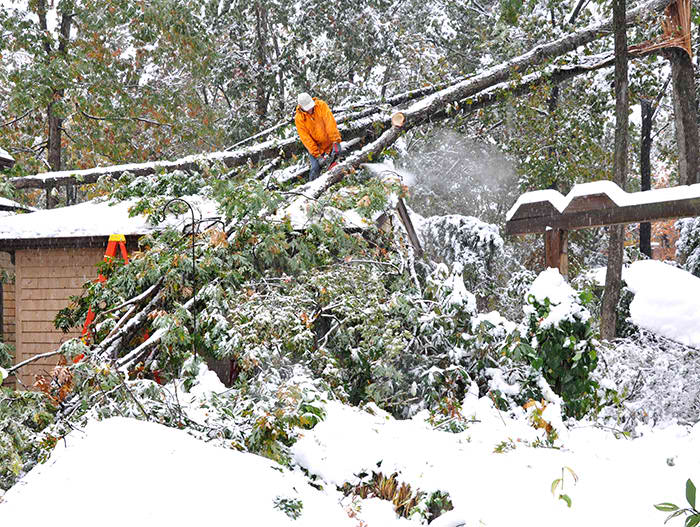
The desiccating winds and cold temperatures are coming! And it is time to prepare your tree before Jack Frostbites.
Why?
This is because the rapid winter temperature fluctuation takes a toll on trees. Further, winter can also damage your trees and you may need to call a tree removal service.
So in appreciation for the abundant shade and air trees provide in summer, it is vital to prepare them for winter.
Newly or young planted trees are susceptible to winter as they lack thick bark, mature and extensive root systems.
By taking some steps, you can get your trees ready for winter. The following are tips you can apply to prep your trees for any type of winter Nature unleashes.
- Branches
Winter-burn – Newly-planted trees are defenseless against winter burn. This occurs when the young roots are unable to absorb enough water, which helps prevent water loss from winds.
Tip
To minimize water loss, spray trees with an anti-transpirant. Also, you put a windbreak by the plants. Further, hit stakes into the ground and attach burlap onto them.
Damaged branches – Ice and snow can pile onto tree branches and cause them to break.
Tip
Prune your branches. Cable or trim branches that may cause harm to walkways and homes. Also, remove heaps of snow with a broom, by sweeping upward gently.
- Trunk
Pests – Trees without rigid and hard bark are susceptible to gnawing rodents like voles and rabbits. They’ll snack on the bark and internal tissues of the tree. If the damage is grave, you may need to call a tree removal service to cut it down.
Tip
Protect tree trunks with wire cages or plastic tree guards. Make certain that you set up trunk protection above the snow line. Else, rodents will rest on snow drifts to eat the tree’s bark
Irrigation bags – Take out irrigation bags from tree’s trunks before weather hits.
Tip
If you don’t remove the bags, you are giving rodents a cozy place to dwell. Also, ice will pile up in the trunk if you don’t take them out.
Sunscald – Intense winter sun on the southern part of a tree can defrost tree bark during the day. At night, if the temperature is freezing cold, thawed cells will freeze. This cracks and ruptures the trunk. Consequently, the ruptured trunk will shut the off water to the tree top. The process is known as sunscald.
Tip
To prevent sunscald, paint the trunks with a white latex paint or wrap trunks with a tree wrap (crepe paper). Trees mostly affected with sunscald have thin bark. The trees include fruit trees, Linden, Maple Honey Locust, and Willow.
- Roots
Water – Trees need enough soil moisture (especially young trees) during winter.
Tip
In areas where the ground freezes, wet when water can pass through the soil.
Mulch – before winter or early winter, put a 2 to 3 inch-thick layer of organic (mulch that goes beyond the dripline. You must do this for newly-planted trees, including broadleaf and conifer.
Tip
Don’t put mulch against the trunk directly. The purpose of Mulch is to:
- Insulate the tree roots and soil against extreme temperature
- Reduce the rate of water loss from the soil.
In extreme cold weather conditions, wait till the soil freezes to apply mulch.
Stake – consider staking if your tree is in a windy location. Use a technique that lets the trunk to move and sway freely. This help to boost strong trunk growth.
Tip
With a strong, wide, and weather-resistant material, join the tree to stakes. Rubber and canvas are viable materials to use.
Overall, if you trim your pruners, stake your trees, and apply mulch, your plants will thrive happily this winter. Post from Fence Company Fort Wayne, thank you for the post.
